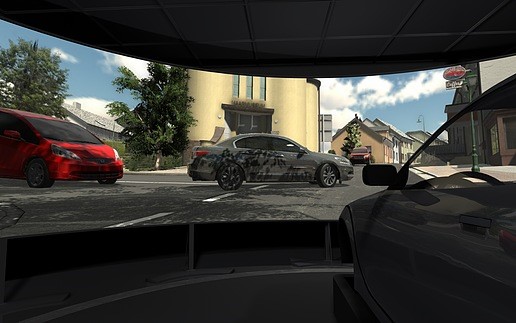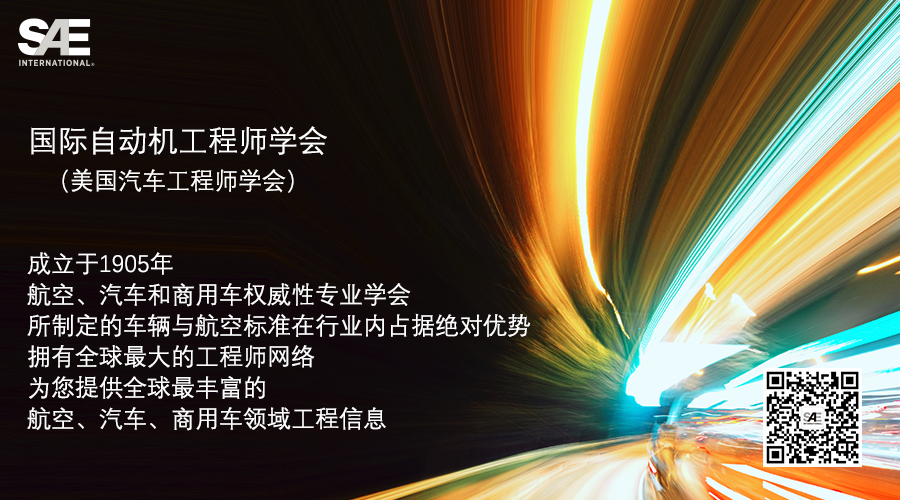 多位软件专家认为,逼真的虚拟技术是真实世界驾驶排放测试(RDE)领域的下一个前沿课题。
多位软件专家认为,逼真的虚拟技术是真实世界驾驶排放测试(RDE)领域的下一个前沿课题。 rFpro公司的技术总监Chris Hoyle表示,过去,真实世界驾驶排放测试并不在模拟器的工作范围之内。
rFpro公司的技术总监Chris Hoyle表示,过去,真实世界驾驶排放测试并不在模拟器的工作范围之内。
“真实世界”的油耗和排放测试已经逐渐成为厂商新车/动力系统评估的重中之重,但也同时给这个本已相当复杂的领域带来了新的挑战和潜在经济负担。长久以来,虚拟测试一直都是汽车开发的重要组成部分,可以为控制成本做出巨大贡献,但这种技术在协助厂商满足“真实世界驾驶排放(RDE)”的合规要求方面是否真的有效,仍是人们的主要担忧之一。
英国专业软件公司rFpro在虚拟道路和赛道测试方面拥有丰富的经验,这家公司旨在协助广大型汽车厂商利用虚拟工具,开展真实世界驾驶排放测试。(阅读相关文章:用于辅助自动驾驶汽车的路面建模技术)
rFpro公司的技术总监ChrisHoyle指出,厂商可以借助一款驾驶模拟系统,建立一个让驾驶员完全沉浸其中的完整虚拟环境,从而实现更加全面的在环测试(DIL)。Hoyle声称,在这种测试环境下,车辆可以对驾驶员的行为做出反应,这在以前是无法实现的。
“只要使用得当,虚拟测试工具可以协助汽车厂商在汽车研发的早期阶段做出一些关键选择,从而避免无谓地投入大量资金。”Hoyle告诉《汽车工程杂志》记者,“过去,新车的排放测试通常在真实赛道进行,测试结果也常因驾驶员的不同而产生巨大差异。如今,这种测试已经被RDE技术所取代,而虚拟测试工具也在这里找到了新的用武之地。”
Hoyle表示,RDE测试并不能排除驾驶员和路况对测试结果的影响。然而,通过选择更多水平不一、习惯不同的驾驶员进行测试,厂商可以更加全面地掌握车辆在不同条件下的行为,从而为未来的新车验收测试积累更多信心。于此同时,这将为厂商节省大量经济和时间成本。
Hoyle表示,“我们的一个客户估计,借助DIL模拟器将汽车研发后期的一些测试环节提前进行,并根据测试结果及时进行调整,可以节约超过30%的相关成本。”
早在许多年前,虚拟测试技术就已经得到了大家的认可。如今,这种技术可以更加广泛地适用于更多领域,为应用的性能测试提供一个没有天气或交通状况干扰的可重复测试环境。Hoyle解释说,“尽管虚拟测试也会对人类驾驶员的行为做出反应,但如果人类驾驶员在虚拟场景中的行为和反应并非与现实世界一模一样,这种虚拟测试几乎没有什么价值。”
在常规的汽车研发项目中,为了在RDE测试阶段之前,确保车辆可以实现设计性能,厂商可能需要负担大量的额外开支。为了优化对车辆的校准,深入理解一些与驾驶员行为有关的因素非常重要,比如有些驾驶员在巡航时的节流调速水平不高,又或是不能及时预判前方车流减速等。
通过道路测试量化车辆排放与驾驶员驾驶习惯之间的关系十分耗时耗力,非常困难。Hoyle声称,rFpro公司开发的DIL模拟器可以参考驾驶员的典型行为,创造一个足够真实的虚拟测试环境。他说,这款模拟器可以协助厂商对汽车的虚拟排放性能有更全面的把握。人类驾驶员手握这款模拟器就可以取得与“真实世界驾驶测试接近的测试结果。”
过去的驾驶模拟器通常对驾驶员行为的反应太慢,无法创造一个足够真实的环境,引领驾驶员做出与“真实世界”中完全相同的“真实”反应。但借助最新一代的细微动作捕捉平台,rFpro设计的软件可以提供毫无延迟的反应速度、超高分辨率的逼真画质,以及拥有弧度、坡度、起伏和坑洼等一系列丰富细节的道路模型,从而为使用者提供Hoyle口中的“前所未有的真实”体验。
通过rFpro公司的虚拟测试工具,汽车厂商可以对车辆“受人类驾驶员影响”和“由电脑控制”的因素加以区分并单独处理。

New virtual tools tackle real-world emissions testing
“Real-world” fuel consumption and emissions testing is becoming central to OEM new car/new powertrain programs. But it brings new challenges and potentially financial headaches to a highly complex area. A major concern is the efficacy of virtual testing—long established as part of vehicle development and a huge contributor to cost saving—in meeting real world driving emissions (RDE) legislation requirements.
Helping to achieve that is the aim of U.K. software specialist rFpro, which has extensive experience in virtual road and track (via F1) testing; seehttp://articles.sae.org/14181/ and http://articles.sae.org/13603/.
Chris Hoyle, rFpro’s Technical Director, states that creating a fully convincing virtual environment, in which a driver feels totally immersed, enables driver-in-the-loop (DIL) testing with a driving simulator to be applied, for what he claims as the first time, in areas where human reaction to a situation affects the vehicle’s behavior.
“Used effectively, virtual testing enables critical decisions to be made early in an automotive engineering program and certainly long before any commitment to significant financial investment," Hoyle told Automotive Engineering. "One such area, not previously associated with simulators, is emissions testing because when RDE tests take the place of today’s artificial rolling road test cycles, variations between different drivers will significantly influence the results obtained.”
RDE tests will be influenced by driving style and road conditions, said Hoyle. But the capability to evaluate the vehicle’s behavior under repeatable laboratory conditions using drivers of different abilities and with different habits in order to maximize confidence ahead of approval testing, can provide a massive saving in costs and time.
“One of our clients estimates that over 30% of the costs incurred in developing driving attributes could be saved by frontloading the engineering activity on a DIL simulator with subjective feedback,” he noted.
Virtual technology testing has been accepted for many years, its scope having broadened to embrace evaluation of the effects of a very wide range of areas under repeatable conditions, without weather or traffic variations. However, where human driver input is required, virtual testing "is of little value unless that driver responds to the test scenario in exactly the same way as he or she would do in a ‘real world’ situation,” explained Hoyle.
The need to ensure, in advance, that a vehicle will achieve the target results during RDE testing threatens to add significant additional cost to the typical development program. Understanding driver influenced variables, such as poor throttle modulation when cruising, or failure to anticipate traffic ahead reducing speed, will be central to optimizing the calibration of the vehicle.
Quantifying the influence of driving habits on vehicle emissions is difficult and time consuming using on-road testing. Software developed by rFpro for DIL simulators creates a sufficiently high level of realism that drivers behave in a representative way, claims Hoyle. He said this gives manufacturers the necessary confidence that a car’s virtual emissions performance, in the hands of a human driver using the simulator, "will be equivalent to its ‘real world’ results.”
Historically, driving simulators have reacted too slowly to driver input to create the realism necessary to trigger driver behavior that is fully representative of ‘real-world’ driving. But when used with the latest generation of lighter motion platforms with faster responses, rFpro’s software is designed to provide what Hoyle regards as “unprecedented realism” via use of lag-free, high resolution graphics and finely detailed road surface models including cambers, gradients, bumps and potholes.
This allows vehicle manufacturers to identify and isolate those aspects of human driving which differ significantly from computer controlled operation.
Author: Stuart Birch
Source: SAE Automotive Engineering Magazine
等级
打分
- 2分
- 4分
- 6分
- 8分
- 10分
平均分
- 作者:Stuart Birch
- 行业:汽车
- 主题:噪声、振动与声振粗糙度质量、可靠性与耐久性测试与检验
